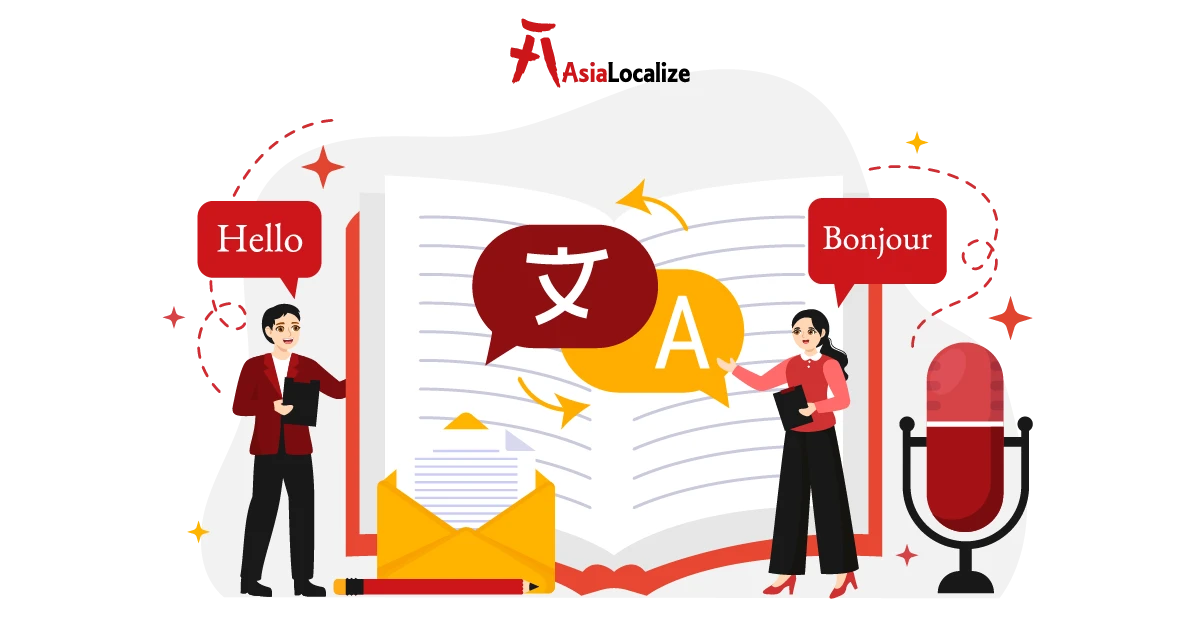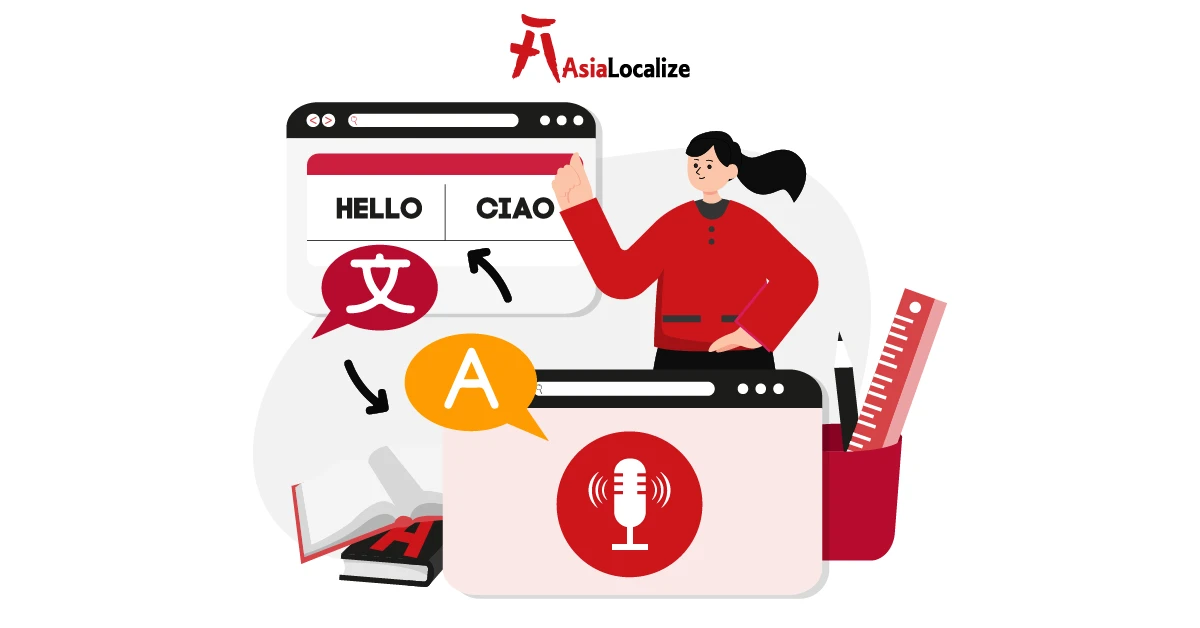Nowadays, medical device companies have enormous opportunities for international growth. Expanding beyond their home markets can help them not only diversify their revenue streams but also stay competitive in the rapidly changing healthcare landscape.
However, it requires putting in the effort in medical device translation to effectively grow the global presence of your medical devices and for your users to use and trust your devices.
In this post, we will take a deeper dive into the world of medical device translation, exploring its challenges, best practices, and beyond.
What is Medical Device Translation?
One crucial part of your business growth strategy to expand the exposure and reach of your medical devices in new markets is through medical device translation.
In its essence, a comprehensive medical device translation approach ensures regulatory compliance, accuracy of medical content, and successful user adoption.
Medical device translation is a meticulous process that translates the content of your medical devices. Although it sounds simple, it requires collaboration among linguistic, medical, regulatory, and design experts to deliver a personalized user experience for customers speaking different languages.
Translating medical device content is complex and requires a deep understanding of the medical device industry and regulations, target language, and culture.
For one thing, this requires experienced, native-speaking professionals familiar with the industry’s intricate technicalities and specific terminology. For another, these professionals should have a strong grasp of relevant regulatory standards and guidelines, such as ISO certification and the European Union Medical Device Regulation (MDR).
Translation inaccuracy and failure to comply with these regulations can result in severe consequences, including product recalls, regulatory fines, and reputational damage.

What Types of Medical Device Content that Your Businesses Need to Consider?
Medical device translation involves a range of content that needs to be accurately translated, as mandated by different regulatory authorities across the globe.
- Software User Interface (UI) and User Experience (UX): This requires integrated translation and localization efforts to translate your software content and adapt UI elements such as menus, buttons, alerts, and prompts is crucial to ensure a seamless and user-friendly experience for users who speak the target language.
- User Manual and Instruction for Use (IFU): Translating user manuals and IFU provides instructions and step-by-step guidance on how to use and operate a device safely and effectively for users in new markets.
- Informed Consent Forms (for Clinical Trials): If the device is used in clinical trials, you need to translate informed consent forms and related documentation to ensure that participants understand the trial procedures and risks.
- Technical Specifications Document: When these documents are available in the local language of healthcare professionals, it helps them ensure the device is compatible with their facility and meets their needs.
- Medical Device Labeling and Packaging Documentation: The translation of labeling and packaging information should be clear, concise, and easily accessible to users. Not only for user understanding but translating product labels and packaging is essential for regulatory compliance.
Best Practices of Medical Device Translation
By following these practices, medical device manufacturers can ensure that their products are effectively translated for global markets while mitigating any potential risks associated with language barriers or misunderstandings.
● Prioritize Local Regulations and Standards
The medical industry is highly regulated, and ensuring that your translations meet all necessary requirements is integral. Before approaching your medical device translation initiative, you’ll need to understand the specific regulations that govern your target market or region.
For example, in the United States, the Food and Drug Administration (FDA) has specific requirements for medical device labeling and instructions for use. The translation must accurately convey all necessary information, including warnings and precautions, in the target language. And all labels must be in English except for products only distributed in Puerto Rico or a US territory where another language is predominant.
For this, you might want to engage local regulatory experts who are familiar with the regulations of each market to make sure your medical device conforms to them.
● Implement User-centered Localization
In the context of medical devices, and as its name suggests, user-centered localization focuses on your target users, ensuring that the translated medical device resonates with the cultural, linguistic, and usability expectations of the local users.
While this primarily means the content should boast linguistic fluency, avoiding awkward phrasing, idiomatic errors, or linguistic ambiguities that could confuse users, it also essentially considers cultural and contextual relevance as well as UI and device usability adjustments.
This, for instance, includes considering text expansion and contraction so the translated text fits the allocated spaces in buttons, menus, and labels. Your medical device visuals and formatting conventions are also adapted to resonate with the cultural preferences and associations of the target audience, including units of measurement, date formats, and other numerical values to match the local standards of the target market.
Moreover, a user-centered localization ensures that the navigation structure of the UI remains intuitive and aligns with how users in the target culture typically interact with technology.
For example, if the original UI uses a swipe gesture to navigate through screens, this gesture should still be intuitive for users in the target market.

● Leverage Expertise and Technology for Translation Accuracy and Terminology Precision
When translating medical device documents, many obstacles may hinder your progress and success. One of which is medical terminology. Medical terminology is often very technical, requiring a deep understanding of the subject matter to translate it accurately.
Medical texts intended for experts differ from those targeting patients. For example, a medical term such as “Chickenpox” that is intended for patients can’t be translated the same to medical professionals.
As a result, medical device translators must be highly skilled and knowledgeable in both the source and target languages and the specific medical field in which the device is used.
Also, in order to achieve optimal outcomes, it is imperative that those responsible for translating medical device materials possess a comprehensive understanding of the intricate cultural and contextual nuances related to their work.
However, the role that translation technology plays in ensuring precision and consistency in terminology translation is significant. Tools like Terminology Management Systems (TMS) and Translation Memory (TM) tools, glossaries, and style guides ensure standardized terminology, reuse of approved translations, and streamlined workflows.
● Never Overlook QA and Testing
Given the sensitive nature of medical content and the potential impact on patient safety, thorough QA and testing processes are essential to verify that the localized device operates effectively and meets the required standards.
You’ll need to design a comprehensive localization QA and testing plan to identify translation inaccuracies or any defects, malfunctions, or safety concerns that may impact the device’s performance or the patient’s safety.
It should include:
- Linguistic and Cultural Validation involves a meticulous review of translated content to ensure accuracy, consistency, and adherence to approved medical terminology.
- Visual Testing involves assessing color choices, imagery, symbols, and any cultural references within the device’s design and content.
- Functional and Usability Testing involves evaluating the device’s functionality and performance to ensure that it meets the intended use and assesses how easy the device is to use and whether it meets user needs. This includes testing all device features, interactions, and responses to ensure that the localized version maintains the same level of performance as the original.
- Quality Assurance and Validation Testing: Quality assurance includes checking for consistency, clarity, and readability of the translated content. Validation testing is necessary to ensure that the device performs as intended and is safe for use in the target market.
Professional Language Support for Your Medical Device Translation Projects
When it comes to translating medical device documentation, it’s crucial to have accurate and quality translations that meet regulatory requirements in different countries.
However, medical device translation can be complex and challenging to navigate. This is where professional help becomes crucial. Investing in professional help for your medical device translation projects can save you time, money, and headaches in the long run. A professional translator with experience in medical device translation can help ensure that the language used is clear and concise, avoiding miscommunication and costly mistakes. They can also help you navigate the regulatory landscape, reducing non-compliance risk.
Furthermore, by using professional medical device translation services, you’ll be able to communicate effectively with your target audience, regardless of their language or location. This can ultimately lead to increased sales and revenue for your medical device company.






